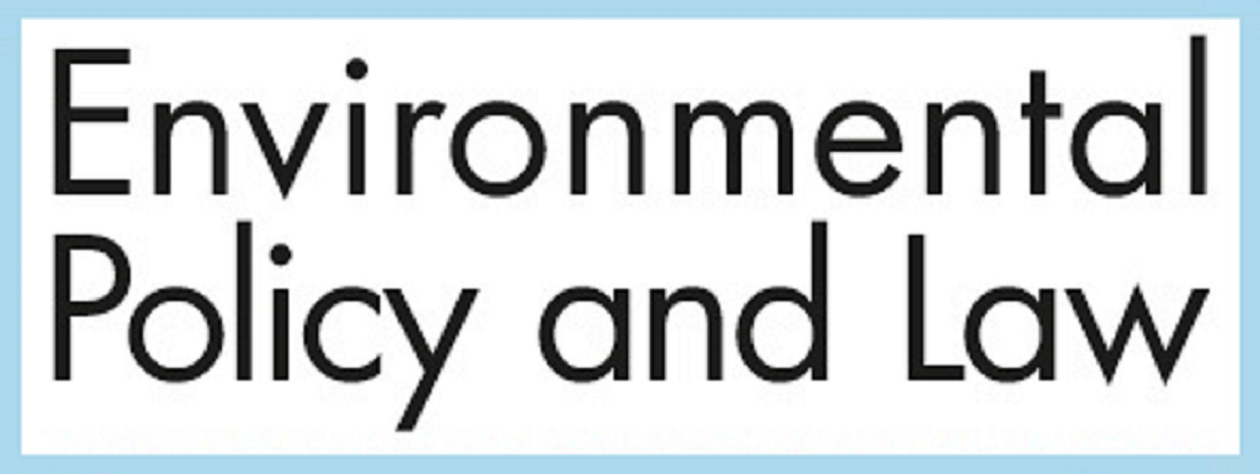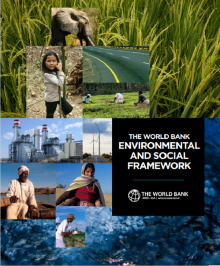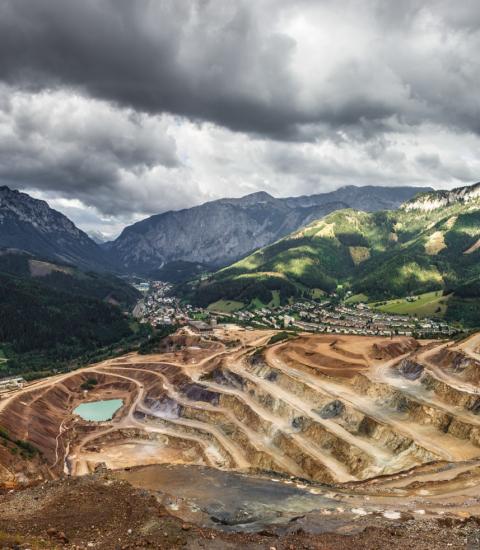
[Author: Daria Shapovalova, University of Aberdeen]
Aberdeen UK – Following the adoption of the UN Declaration on the Rights of Indigenous People (UNDRIP), there has been a proliferation of studies on indigenous rights in the context of natural resources extraction. The wide endorsement of the UNDRIP, however, did not solve a number of challenges related to resource extraction such as sovereignty over resources, access to justice, and local implementation. This commentary discusses such challenges, focusing on the UNDRIP’s effectiveness or lack of it.
Introduction
The last decade saw a proliferation of studies on indigenous peoples’ rights in the context of natural resources extraction and, in particular, on the legal nature and implementation of the Free, Prior, and Informed, Consent (FPIC) [1]. FPIC has originated from international law, crystallizing in the United Nations Declaration on the Rights of Indigenous People (UNDRIP) adopted in 2007. As a “human rights norm” [2], FPIC is intended to provide for effective participation of indigenous people in decision-making related to projects “affecting their lands or territories and other resources” [3]. Legal scholarship presents only one piece of the puzzle, often focusing on the analysis of international and domestic legislation and case law [4]. A more comprehensive picture is presented to the reader studying the relevant findings from other disciplines, including politics, geography, anthropology; as well as reports from NGOs and indigenous peoples’ organizations [5]. The general consensus leans towards a critical approach to FPIC as a principle due to its patchy implementation, the ambiguity of its precise content, and often unsatisfactory implementation on the ground [6]. This commentary discusses selected issues of the UNDRIP’s effectiveness in safeguarding indigenous rights during resource extraction activities.
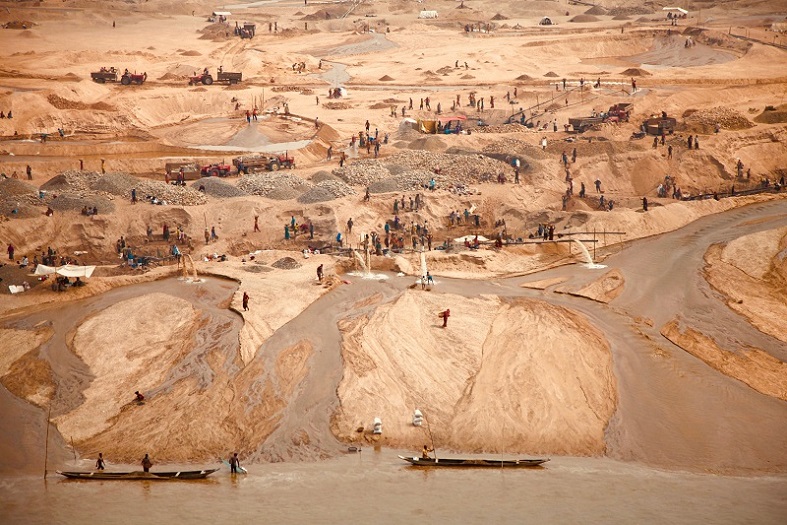
Indigenous people and resource extraction
The UNDRIP recognizes indigenous communities’ special connection to their lands, territories, and resources [7]. However, the rights to resources appear to be limited to those traditionally owned and used [8], thus excluding sub-surface resources [9]. At the same time, the UNDRIP places obligations on States associated with natural resource development, such as the obligation to ‘consult and cooperate in good faith’ with indigenous groups in order to obtain FPIC for any “project affecting their lands or territories and other resources, particularly in connection with the development, utilization or exploitation of mineral, water or other resources” [10]. Where resource extraction projects are associated with relocation or storage/disposal of hazardous materials, the UNDRIP requires a positive obligation to obtain consent [11]. In the absence of these grave conditions, the general view is that the Declaration “does not confer on indigenous peoples an overarching veto right” [12]. Indeed, even where consent is required by the national legislation, there are often ways to circumvent the requirement reducing it to consultation or limiting it only to officially titled lands [13].
However, it should not be presumed that indigenous people are always a priori against extractive industries presence on or near their territories. Such a view fails to consider indigenous groups dependent on activities other than traditional hunting/fishing/gathering, or simply those who are choosing to exploit resources available and receive a fair share of profits and benefits. In some areas, extractive industries are the highest-paying employer and provider of educational opportunities [14]. Thus, amidst the COVID-19 related economic downturn, the Indian Resource Council, an organization representing 130 First Nations in Canada, asked Prime Minister Trudeau to postpone the implementation of the UNDRIP so as not to “harm an already challenged oil and gas sector” [15].
It is important to acknowledge, though, that benefit-sharing processes in the resource extraction sector are far from satisfactory. Disagreements over support for extractive industries may lead to conflict between indigenous representatives [16]. In countries without a tradition of indigenous treaty and impact-benefit agreements negotiations, procedures and safeguards for effective benefit-sharing are urgently lacking. The lack of robust local legal framework and/or access to legal representation often results in the absence of coherent consultation and inadequate compensation [17].
Much ado about UNDRIP?
It is tempting to discard soft law instruments, like the UNDRIP, as they do not create international legal obligations for States, unless directly incorporated into domestic law [18]. Despite some of the UNDRIP’s provisions being regarded as customary law [19], views on whether FPIC represents a customary rule vary [20]. Thus, attributing any success stories of effective indigenous participation or benefit-sharing to direct implementation of the UNDRIP would be rather problematic. Instead, it is fair to say that the movement pushing the UNDRIP negotiations and its subsequent adoption, and awareness-raising associated with it, have placed the importance of indigenous rights higher on the agenda of legislators, judges, and the relevant corporate and finance actors. It is through these indirect means that most practical changes seem to arrive, confirming the value of often neglected “soft law” sources [21].
International courts and human rights organizations have been referring to the UNDRIP in their decisions related to indigenous rights and natural resources. The Inter-American Court of Human Rights in its landmark Saramaka case found violations in how Suriname had granted logging and mining concessions without consent of Saramaka people, and had requested that a the granting of collective title [22]. The African Court on Human and Peoples’ Rights, in the Ogiek case concerning forced evictions, interpreted land rights in light of the UNDRIP and FPIC, in particular [23]. A number of domestic courts referenced the UNDRIP [24], including the Supreme Court of Belize stating that it embodies “general principles of international law relating to indigenous peoples and their lands and resources” [25]. Although in none of the above cases, the UNDRIP was the ratio decidendi, its legal value is in aiding interpretation of existing often-vague obligations.
In the absence of consistent incorporation of FPIC into national legislation, private governance sometimes provides a higher standard for protection of indigenous rights in the resource extraction context. Thus, both the World Bank and the International Finance Corporation require their lenders to comply with the FPIC standard where their projects may have “adverse impacts on lands traditionally owned by, or under the customary use of, indigenous peoples”, regardless of whether the land is officially titled [26]. While it is a positive step, leading to increased transparency in some cases, one must be mindful that the approach taken by private governance is risk management rather than human rights-based [27].
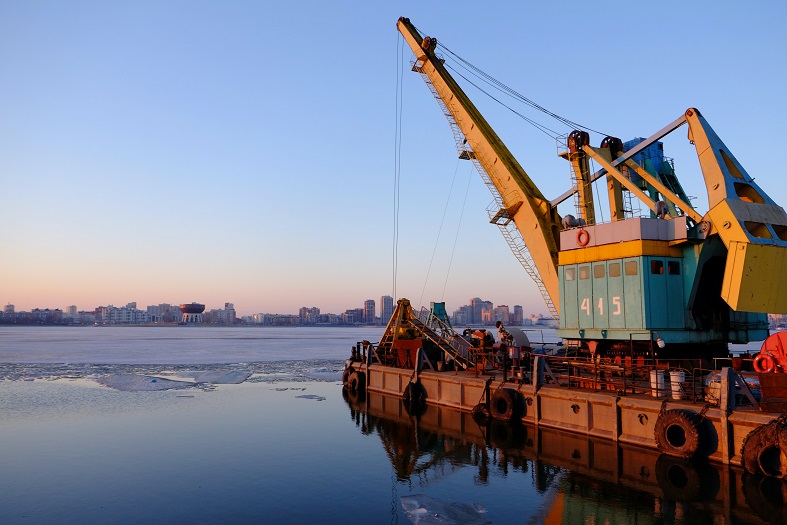
Problems that remain
In addition to the patchy implementation of FPIC and benefit-sharing, a number of problems still remain. First, the UNDRIP does not solve the problem of ownership of natural resources for indigenous people on their lands and territories. International law firmly vests sovereignty (the exclusive right to adopt and enforce laws, and to judge the disputes arising) in the hands of States [28]. As stated above, sub-surface resources are not understood to be covered by the UNDRIP for the purposes of economically independent ownership and use. There are some positive examples of treaty or statute-based transfer of resource management to indigenous representatives or co-management with the State [29]. These are, however, more of an exemption than a rule.
A further issue arises with regards to offshore resources. The UNDRIP recognizes indigenous peoples’ “right to maintain and strengthen their distinctive spiritual relationship with their traditionally owned or otherwise occupied […] waters and coastal seas” [30]. However, it fails to articulate the extent of the rights in the offshore areas. In practice, States have been reluctant to explicitly recognize indigenous rights over marine areas, let alone the seabed resources [31].
Finally, an often-overlooked problem is access to justice for indigenous groups when their rights are being violated. The UNDRIP acknowledges “the right to access to and prompt decision through just and fair procedures for the resolution of conflicts and disputes with States or other parties” [32]. Yet, in practice, in the face of violations, indigenous groups often have to rely on the assistance of NGOs, face challenges of the burden of proof, and get involved in a multi-year legal battle with opponents much richer in resources [33].
Conclusions
It is ironic to rely on international law to recognize and safeguard indigenous rights after decades of international law-justified colonialism causing the abuse of these rights in the first place. In this context, as Rachael L. Johnstone points, the function of FPIC is “not to provide a remedy for the wrongful taking of land and resources” but to “protect a people, a nation, from uses of territories that are essential to its survival qua people” [34]. Despite its non-legally binding nature and the initial opposition of key States to the already watered-down text, the UNDRIP today presents the only universally-adopted set of standards. It is now up to the national legislators and courts to implement, enhance, uphold, and improve the standards set in the UNDRIP.
References
1. Stephen Young, Indigenous Peoples, Consent and Rights: Troubling Subjects (Routledge, 2019); Mauro Barelli, “Free, Prior, and Informed Consent in the UNDRIP: Articles 10, 19, 29(2), and 32(2)” in Jessie Hohmann and Marc Weller (Eds), The UN Declaration on the Rights of Indigenous Peoples; A Commentary (OUP, 2018); UN Expert Mechanism on the Rights of Indigenous Peoples, “Free, Prior and Informed Consent: A Human Rights-Based Approach” (10–28 September 2018) A/HRC/39/62; Cathal M. Doyle, “Indigenous Peoples, Title to Territory” in Rights and Resources: The Transformative Role of Free Prior and Informed Consent (Routledge, 2014).
2. UN Expert Mechanism on the Rights of Indigenous Peoples, “Free, Prior and Informed Consent: A Human Rights-Based Approach” (10–28 September 2018) A/HRC/39/62, para 3-5.
3. United Nations Declaration on the Rights of Indigenous People (adopted 13 September 2007), Art. 32(2).
4. Emma Wilson, “Indigenous Rights and Resource Development in the Arctic: An Overview of International Standards and Principles for Consultation, Participation and Consent” in Rachael L. Johnstone and Anne M. Hansen (Eds), Regulation of Extractive Industries: Community Engagement in the Arctic (Routledge, 2020); Rachael L. Johnstone, “What Is Required for Free, Prior and Informed Consent and Where Does It Apply?” in Rachael L. Johnstone and Anne M. Hansen (Eds), Regulation of Extractive Industries: Community Engagement in the Arctic (Routledge, 2020); Mauro Barelli, “Free, Prior, and Informed Consent in the UNDRIP: Articles 10,19, 29(2), and 32(2)” in Jessie Hohmann and Marc Weller (Eds), The UN Declaration on the Rights of Indigenous Peoples; A Commentary (OUP, 2018); Layla Hughes, “Relationships with Arctic Indigenous Peoples: To What Extent Has Prior Informed Consent Become a Norm?” (2018) Review of European, Comparative & International Environmental Law 27: 15–27.
5. See excellent examples of case studies and interdisciplinary approaches in Maria Tysiachniouk and others, “Oil and Indigenous People in Sub-Arctic Russia: Rethinking Equity and Governance in Benefit Sharing Agreements” (2018) Energy Research & Social Science 37: 140–152; Martin Papillon and Thierry Rodon, “Proponent-Indigenous Agreements and the Implementation of the Right to Free, Prior, and Informed Consent in Canada” (2017) Environmental Impact Assessment Review 62: 216–224; Angus MacInnes, Marcus Colchester, and Andrew Whitmore, “Free, Prior and Informed Consent: How to Rectify the Devastating Consequences of Harmful Mining for Indigenous Peoples” (2017) Perspectives in Ecology and Conservation 15(3): 152–160; Lorenza B Fontana and Jean Grugel, ‘The Politics of Indigenous Participation Through “Free Prior Informed Consent”: Reflections from the Bolivian Case’ (2016) World Development 77: 249–261. See also, “Forest Peoples Programme, Resources on FIPC”, link: forestpeoples.org/en/lands-forests-territories-law-policy-global-finance-trade/training-tool/2017/resources-free-prior (last accessed: 10 August 2020).
6. A particular bone of contention is the meaning of “consent” interpreted in most times as a mere consultation with a view of obtaining such consent, rather than a veto right. Marco Barelli, “Free, Prior, and Informed Consent in the UNDRIP: Articles 10,19, 29(2), and 32(2)” in Jessie Hohmann and Marc Weller (Eds), The UN Declaration on the Rights of Indigenous Peoples; A Commentary (OUP, 2018); Martin Papillon and Thierry Rodon, “Proponent-Indigenous Agreements and the Implementation of the Right to Free, Prior, and Informed Consent in Canada” (2017) Environmental Impact Assessment Review 62: 216–224.
7. UN United Nations Declaration on the Rights of Indigenous People (adopted 13 September 2007), Art. 26(1). This paragraph is based on Daria Shapovalova, “Indigenous Rights and Resource Extraction in Guyana: A Learning Opportunity for the New Offshore Sector?” (2020) Gas & Energy Law Intelligence 18(2).
8. United Nations Declaration on the Rights of Indigenous People (adopted 13 September 2007), Art. 26(2).
9. Katja Göcke notes (on p.132) that during negotiations States expressly opposed indigenous peoples’ attempts to include a provision on their right to sub-surface resources in: “Protection and Realization of Indigenous Peoples’ Land Rights at the National and International Level” (2013) Goettingen Journal of International Law 5: 87–154.
10. United Nations Declaration on the Rights of Indigenous People (adopted 13 September 2007), Art. 32(2).
11. United Nations Declaration on the Rights of Indigenous People (adopted 13 September 2007), Arts 10 and 29(2).
12. Mauro Barelli, “Free, Prior, and Informed Consent in the UNDRIP: Articles 10, 19, 29(2), and 32(2)” in Jessie Hohmann and Marc Weller (Eds), The UN Declaration on the Rights of Indigenous Peoples; A Commentary (OUP, 2018) 268.
13. See discussion on Amerindian Act in Guyana in Daria Shapovalova, “Indigenous Rights and Resource Extraction in Guyana: A Learning Opportunity for the New Offshore Sector?” (2020) Gas & Energy Law Intelligence 18(2).
14. See Ken S. Coates, “Indigenous Engagement with Canadian Energy Economy: How Far We’ve Come” (Macdonald-Laurier Institute, 2020), link: macdonaldlaurier.ca/indigenous-engagement-resource-economy (last accessed: 3 December 2020).
15. This view if, of course, not representative of all indigenous people in Canada. “Protection and Realization of Indigenous Peoples’ Land Rights at the National and International Level” (2013) Goettingen Journal of International Law 5: 87–154.
16. Mia Bennett, “In Debate over Alaska Drilling, Two Indigenous Representatives Clash” (6 November 2017), link: cryopolitics.com/2017/11/06/in-debate-over-alaska-drilling-two-indigenous-representatives-clash (last accessed: 13 August 2020).
17. Maria Tysiachniouk, Laura A. Henry, Machiel Lamers, and Jan P.M. van Tatenhove, “Oil and Indigenous People in Sub-Arctic Russia: Rethinking Equity and Governance in Benefit Sharing Agreements” (2018) Energy Research & Social Science 37: 140–152; Amelia Alva-Arévalo, “A Critical Evaluation of the Domestic Standards of the Right to Prior Consultation under the UNDRIP: Lessons from the Peruvian Case” (2019) The International Journal of Human Rights 23: 234–248; Daria Shapovalova, “Indigenous Rights and Resource Extraction in Guyana: A Learning Opportunity for the New Offshore Sector?” (2020) Gas & Energy Law Intelligence 18(2).
18. On criticism of soft law and associated terminology see Jan Klabbers, “The Redundancy of Soft Law” (1996) Nordic Journal of International Law 65: 167–182.
19. Mattias Åhrén, Indigenous Peoples’ Status in the International Legal System (OUP, 2016) 103–104; Mauro Barelli, “The Role of Soft Law in the International Legal System: The Case of the United Nations Declaration on the Rights of Indigenous Peoples” (2009) International & Comparative Law Quarterly 58: 957–983
20. Tara Ward, “The Right to Free, Prior, and Informed Consent: Indigenous Peoples’ Participation Rights within International Law” (2011) Northwestern Journal of International Human Rights 10: 54–84; International Law Association, Resolution no 5//2012 Rights of Indigenous Peoples (Sofia, 26–30 August 2012) para 5.
21. Mauro Barelli, “The Role of Soft Law in the International Legal System: The Case of the United Nations Declaration on the Rights of Indigenous Peoples” (2009) International & Comparative Law Quarterly 58: 957–983.
22. Saramaka People v Suriname, Judgment (28 November 2007) para 5. The court refers to Art. 32 of the United Nations Declaration on the Rights of Indigenous People in para 131. For a detailed discussion see (on p.56) Federico Lenzerini, “Implementation of the UNDRIP around the World: Achievements and Future Perspectives. The Outcome of the Work of the ILA Committee on the Implementation of the Rights of Indigenous Peoples” (2019) The International Journal of Human Rights 23: 51–62.
23. African Commission on Human and People’s Rights v Republic of Kenya no 006/2012 (judgment 26 May 2017). See Lucy Claridge, “The Approach to UNDRIP within the African Regional Human Rights System” (2019) The International Journal of Human Rights 23: 267; Matthew I. Mitchell, and Davis Yuzdepski, “Indigenous Peoples, UNDRIP and Land Conflict: An African Perspective” (2019) The International Journal of Human Rights 23: 1356–1377.
24. See further Federico Lenzerini, “Implementation of the UNDRIP around the World: Achievements and Future Perspectives. The Outcome of the Work of the ILA Committee on the Implementation of the Rights of Indigenous Peoples” (2019) The International Journal of Human Rights 23: 51–62. See also case studies on the implementation of the UNDRIP compiled by the International Law Association Committee on Indigenous Rights, link: ila-hq.org/index.php/committees (last accessed: 30 July 2020).
25. Belize–Aurelio Cal et al. v. Attorney General of Belize, Supreme Court of Belize (Claims No. 171 and 172 of 2007) (18 October 2007) (Mayan Land Rights) para 132, link: .elaw.org/es/content/belize-aurelio-cal-et-al-v-attorney-general-belize-supreme-court-belize-claims-no-171-and-17 (last accessed: 30 July 2020).
26. Emphasis added, International Finance Corporation, “Performance Standards on Environmental and Social Sustainability (Performance Standard 7, Indigenous Peoples)” (2012), link: https://www.ifc.org/wps/wcm/connect/topics_ext_content/ifc_external_cor… (last accessed: 30 July 2020). See also, The World Bank, “Environmental and Social Framework” (2017), link: pubdocs.worldbank.org/en/837721522762050108/Environmental-and-Social-Framework.pdf#page=89&zoom=80 (PDF) (last accessed: 30 July 2020).
27. See Corinne Lewis and Carl Söderbergh, “The World Bank’s New Environmental and Social Framework: Some Progress but Many Gaps Regarding the Rights of Indigenous Peoples” (2019) The International Journal of Human Rights 23: 63–86.
28. UNGA Res 1803 Permanent Sovereignty Over Natural Resources (XVII) (14 December 1962).
29. In 2009, the Danish Parliament passed the Act on Greenland Self-Government, establishing that legislative, executive, and judiciary powers shall be administered by the Greenlandic authorities. Act no. 473 (12 June 2009) on Greenland Self-Government. For discussion of treaty-based co-management see Thierry Rodon and Aude Therrien, “Resource Development & Land Claim Settlements in the Canadian Arctic: Multilevel Governance, Subsidiarity and Streamlining” (2015) Arctic Yearbook.
30. United Nations Declaration on the Rights of Indigenous People (adopted 13 September 2007), Art. 25; Rachael L. Johnstone, ”Indigenous Rights in the Marine Arctic” in Cécile Pelaudeix and Ellen Margrethe Basse (Eds), Governance of Arctic Offshore Oil and Gas (Routledge, 2017).
31. See Endalew Lijalem Enyew, “International Human Rights Law and the Rights of Indigenous Peoples in Relation to Marine Space and Resources” in Stephen Allen, Nigel Bankes, and Øyvind Ravna (Eds), The Rights of Indigenous Peoples in Marine Areas (Hart Publishing, 2019); Daria Shapovalova, “Indigenous Rights and Resource Extraction in Guyana: A Learning Opportunity for the New Offshore Sector?” (2020) Gas & Energy Law Intelligence 18(2). For a more positive example, see a case from the Canadian Supreme Court on the duty to consult in relation to seismic testing near the community of Clyde River Supreme Court of Canada, Clyde River (Hamlet) v. Petroleum Geo-Services Inc. (2017) 1 SCR 1069.
32. United Nations Declaration on the Rights of Indigenous People (adopted 13 September 2007), Art. 40.
33. Jeremie Gilbert and Ben Begbie-Clench, ‘“Mapping for Rights”: Indigenous Peoples, Litigation and Legal Empowerment’ (2018) Erasmus Law Review 11: 6–13; Antonio M Cisneros De Alencar, “Empowering Indigenous People to Claim Their Rights before National Courts, an Experience from Guatemala” (2014), link: academiccommons.columbia.edu/doi/10.7916/D85D8QQV (last accessed: 18 August 2020).
34. Rachael L. Johnstone, “What Is Required for Free, Prior and Informed Consent and Where Does It Apply?” in Rachael L. Johnstone and Anne M. Hansen (Eds), Regulation of Extractive Industries: Community Engagement in the Arctic (Routledge, 2020).
